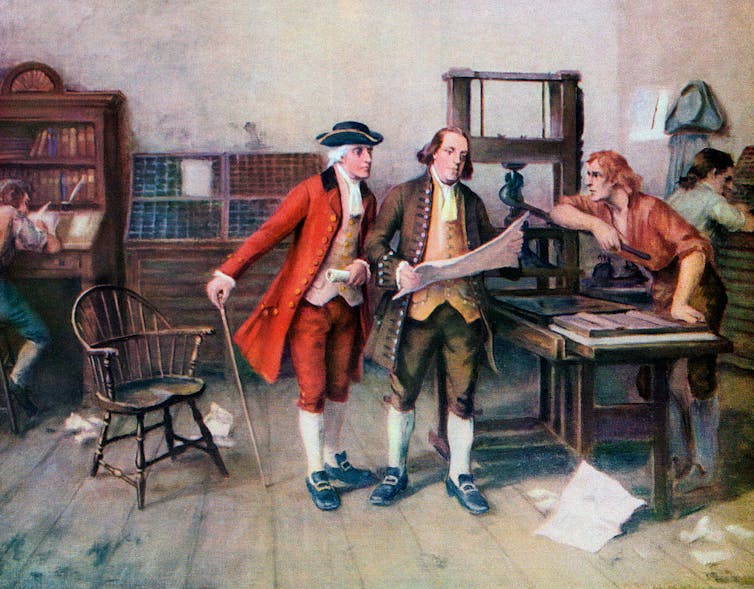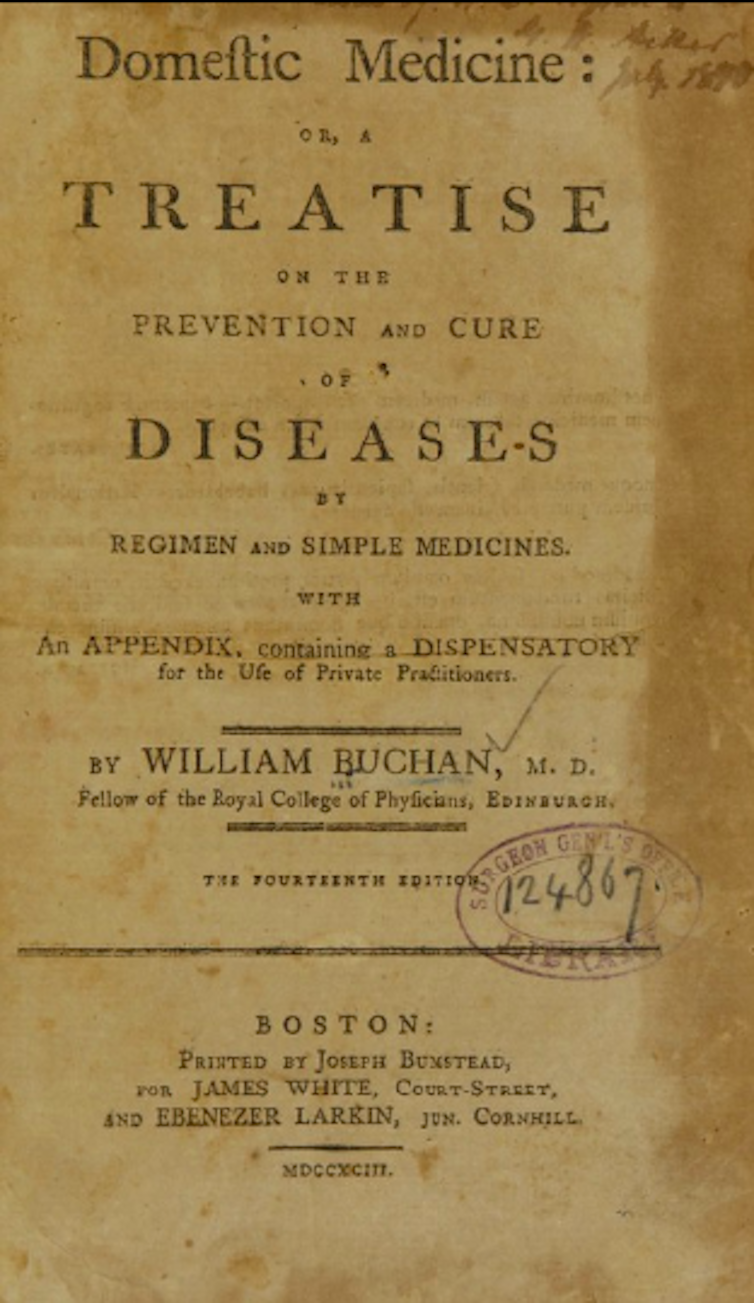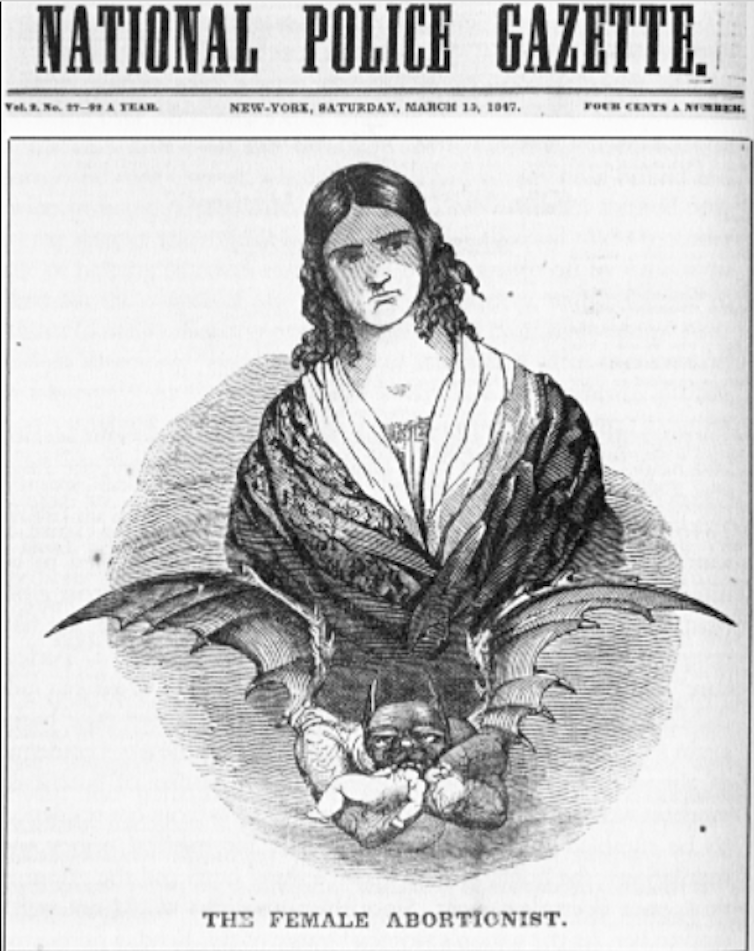When the US Constitution was ratified, women had much more autonomy over abortion decisions than during 19th century
Maurizio Valsania, Università di Torino

Justice Samuel Alito appears spellbound by the 19th century.
In Dobbs v. Jackson Women’s Health Organization, the decision Alito wrote overruling 50 years of constitutional protection for women’s right to get an abortion, he deploys arguments that are based on several historical precedents. He uses the phrase “history and tradition” regularly.
But for Alito, the 19th century looks like the true golden age: “In 1803, the British Parliament made abortion a crime at all stages of pregnancy and authorized the imposition of severe punishment.”
He goes on and on: “In this country during the 19th century, the vast majority of the States enacted statutes criminalizing abortion at all stages of pregnancy.”
“By 1868, the year when the Fourteenth Amendment was ratified,” Alito concludes, “three-quarters of the States, 28 out of 37, had enacted statutes making abortion a crime.”
But in his rather selective forays into history, Alito doesn’t ask what to me, as a historian, constitutes a set of fundamental questions: Why was abortion eventually criminalized during that time? What was the broad cultural and intellectual context of that period? And, more important, is there something peculiar about the 19th century?
As far as women’s bodies and abortion are concerned, the 19th century saw a decrease in the trust in, and power of, women themselves.
 |
| William Buchan’s book ‘Domestic Medicine,’ first published in 1769 and found in many American homes, contained instructions for an abortion. National Library of Medicine |
To begin with, 17th- and 18th-century legal authorities Edward Coke, Matthew Hale and William Blackstone had all advocated for or condoned abortion. They fretted only when the procedure was carried out after “quickening,” the moment when the mother realizes that the fetus moves in her womb, approximately the fourth month of pregnancy.
As a medical procedure, abortion was widespread in Colonial and 18th-century America. By using more or less safe techniques, midwives and medical practitioners performed many types of operations on their patients. The woman could easily die, of course; but when she sought an abortion, no social, legal or religious force would have blocked her.
Also, a woman could choose from many available remedies rather than have an operation. Derived from juniper bushes, “savin,” or Juniperus sabina, was one of the most popular abortifacients.
Other herbs and concoctions were similarly taken: pennyroyal, tansy, ergot, Seneca snakeroot or cotton root bark.
Benjamin Franklin inserted an abortion recipe in a popular textbook he republished in Philadelphia in 1748. He didn’t prompt any scandal.
The truth is that America’s founders, together with their contemporaries, had a rather democratic understanding of the female body. They believed that women, physiologically speaking, weren’t qualitatively different from men; the two sexes were equal and complementary.
Men’s and women’s composition, medical doctors argued, was identical in essence – the only difference was anatomical, in that male sexual organs were more externally distended than female organs.
Just like the male, the female was thought of as fully in control of the workings of her physiology, including her sexuality. It was believed that both the man and the woman had to reach orgasm, better if simultaneously, for pregnancy to ensue.
This made 18th-century men attentive to the satisfaction of their female partners, though for utilitarian reasons.
Especially when sex was aimed at procreation, the woman had to be as active as the male partner. The 18th-century woman was active and in control. She trusted her bodily feelings, including her pleasures.
And crucially, only she could detect whether quickening had taken place in her womb. Consequently, she could immediately tell whether terminating a pregnancy at a given time was acceptable. Or if it was a crime.
 |
| 19th-century American abortionist Ann Trow Lohman, who performed abortions in New York City and was referred to by one anti-abortion advocate as ‘the monster in human shape.’ Wikipedia |
19th-century woman: Weak and chaste
The 19th century changed all that. The understanding of physiology and the mechanisms of the female body underwent a deep transformation. European and American doctors, now, saw women as essentially different from men: From a “one body” model, the medical discourse shifted toward a “two body” model.
Women’s level of self-determination decreased accordingly. Suddenly, they were not only weaker or softer than men, but inherently passive, too. Instead of being encouraged to take part in sex, actively and with vigor, 19th-century women were expected to be withdrawn.
They were thus recast as pure, chaste and modest. Commendable women were virgins, wives, mothers. Or else they were prostitutes, nearly criminals, which reflects the Victorian dualistic mindset. Instead of being urged to trust the quickening and other physiological events happening in her womb or her vagina, the honest woman had to trust her doctor.
Anti-abortion campaigns began in earnest in the mid-19th century. They were waged mostly by the American Medical Association, founded in 1847, and were fundamentally anti-feminist. They chastised women for shunning the Victorian “self-sacrifice” expected of mothers.
Anti-abortion campaigns were targeted against midwives and tried to discredit women’s firsthand experience of pregnancy. Male doctors claimed pregnancy as a medical terrain - a realm that belonged to them exclusively.
Based on women’s own bodily sensations – not on medical diagnosis – quickening was denigrated. Quickening, of course, made doctors dependent on women’s self-diagnosis and judgment. Dr. Horatio R. Storer, the leader of the medical campaigns against abortion, described quickening as “in fact but a sensation.” In such a context, it could no longer be framed as the basis from where all moral, social and legal standards emerged.
In the Dobbs decision, Alito says: “The Court finds that the right to abortion is not deeply rooted in the Nation’s history and tradition.” This is a historical fact: Protection of the right to abortion wasn’t around in America before Roe.
But it is also an incomplete picture of the full story. The criminalization of abortion, plus the decentralization of the woman’s experience, plus the medicalization of her feelings that led to that decision, are facets that belong to the long-gone 19th century.
No American lives in that century any more - not even Justice Alito.![]()
Maurizio Valsania, Professor of American History, Università di Torino
This article is republished from The Conversation under a Creative Commons license. Read the original article.